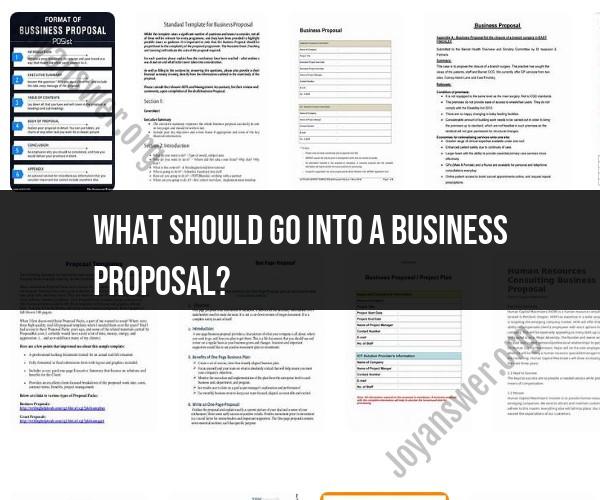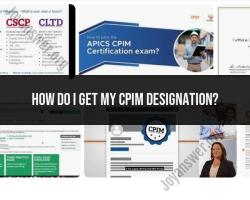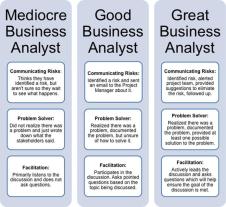What should go into a business proposal?
A well-crafted business proposal is a crucial document for presenting your ideas, products, or services to potential clients or partners. It should be clear, persuasive, and comprehensive. Here are the key components that should go into a business proposal:
1. Cover Page:
- Include a professional cover page that contains your company's name, logo, contact information, and the title of the proposal. This is the first impression, so make it visually appealing.
2. Executive Summary:
- Provide a brief overview of your proposal. Summarize the main points, the problem you're addressing, your solution, and what you're seeking from the recipient.
3. Table of Contents:
- For longer proposals, include a table of contents to help readers navigate the document.
4. Introduction:
- Begin with an introduction that explains the purpose of the proposal and establishes the context for your proposal.
5. Problem Statement:
- Clearly define the problem or need that your proposal aims to address. Provide data, evidence, and examples to illustrate the issue.
6. Proposed Solution:
- Present your solution to the problem. Explain how your product or service can resolve the issue or meet the need. Highlight the unique selling points or features that differentiate your solution from competitors.
7. Objectives and Goals:
- Outline the specific objectives and goals you aim to achieve through your proposal. These should be measurable and tied to the problem you identified.
8. Methodology or Approach:
- Describe the approach or methodology you will use to implement your solution. This may include a step-by-step plan, a timeline, and key milestones.
9. Scope of Work:
- Define the scope of work, including the tasks, responsibilities, and deliverables involved in the project. Be clear about what you will and won't do.
10. Budget and Pricing:- Provide a detailed breakdown of the costs associated with your proposal. Include pricing for products or services, as well as any additional expenses. If relevant, specify payment terms.
11. Timeline or Schedule:- Present a timeline that outlines the project's phases and expected completion dates. This helps clients understand the project's duration.
12. Company Background:- Share information about your company, including its history, expertise, and relevant experience. Highlight what makes your business a suitable choice for the project.
13. Testimonials and Case Studies:- Include client testimonials, success stories, or case studies that demonstrate your ability to deliver results.
14. Team and Key Personnel:- Introduce the key team members who will be involved in the project. Provide their qualifications, expertise, and relevant experience.
15. Terms and Conditions:- Specify any terms and conditions related to the proposal, such as warranties, guarantees, intellectual property rights, and liability.
16. Conclusion:- Summarize the key points and reiterate why your proposal is the best solution for the recipient's needs.
17. Call to Action:- Encourage the recipient to take the next steps, whether that's signing a contract, scheduling a meeting, or making a purchase.
18. Appendices and Supporting Documents:- Attach any relevant documents, such as product specifications, legal agreements, certifications, or additional research data, in the appendices.
19. References and Citations:- If you've referred to external sources or used data in your proposal, include a references or citations section to give credit and show the credibility of your information.
20. Signature Page:- Include a page for signatures if the recipient needs to officially accept or approve the proposal.
Ensure that your business proposal is well-organized, error-free, and tailored to the needs and preferences of the recipient. It should be written in a persuasive and professional tone, addressing the recipient's concerns and providing a clear, compelling argument for why they should accept your proposal.
What to Include in a Business Proposal: Essential Sections
A well-written business proposal can help you win new clients and contracts. It is important to include all of the essential sections in your proposal to give yourself the best chance of success.
Cover Letter and Title Page: First Impressions in Your Proposal
The cover letter and title page are your first chance to make a good impression on potential clients. The cover letter should be brief and to the point, and it should state the purpose of your proposal and why your company is the best choice for the job. The title page should include your company name, contact information, and the date.
Executive Summary: Capturing the Essence of Your Proposal
The executive summary is a one-page overview of your entire proposal. It should highlight the key points of your proposal and explain why your company is the best choice for the job. The executive summary should be well-written and easy to understand, and it should be tailored to the specific needs of your potential client.
Detailed Proposal Content: Presenting Your Solutions
The detailed proposal content is where you will present your solutions to the client's problems. Be sure to explain your solutions in detail and to provide evidence to support your claims. Use clear and concise language, and avoid using technical jargon that your client may not understand.
Appendices and Supporting Documents in a Business Proposal
The appendices and supporting documents are where you will include any additional information that is relevant to your proposal. This may include things like case studies, white papers, and product specifications.
Tips for Writing a Winning Business Proposal
- Be clear and concise in your writing.
- Tailor your proposal to the specific needs of your potential client.
- Highlight your company's strengths and experience.
- Provide evidence to support your claims.
- Proofread your proposal carefully before submitting it.
By following these tips, you can write a business proposal that will give you the best chance of winning new clients and contracts.













